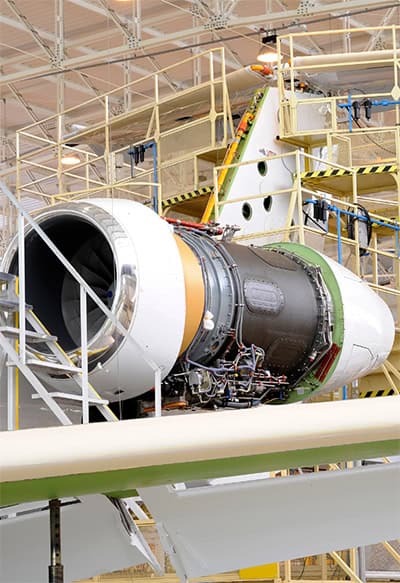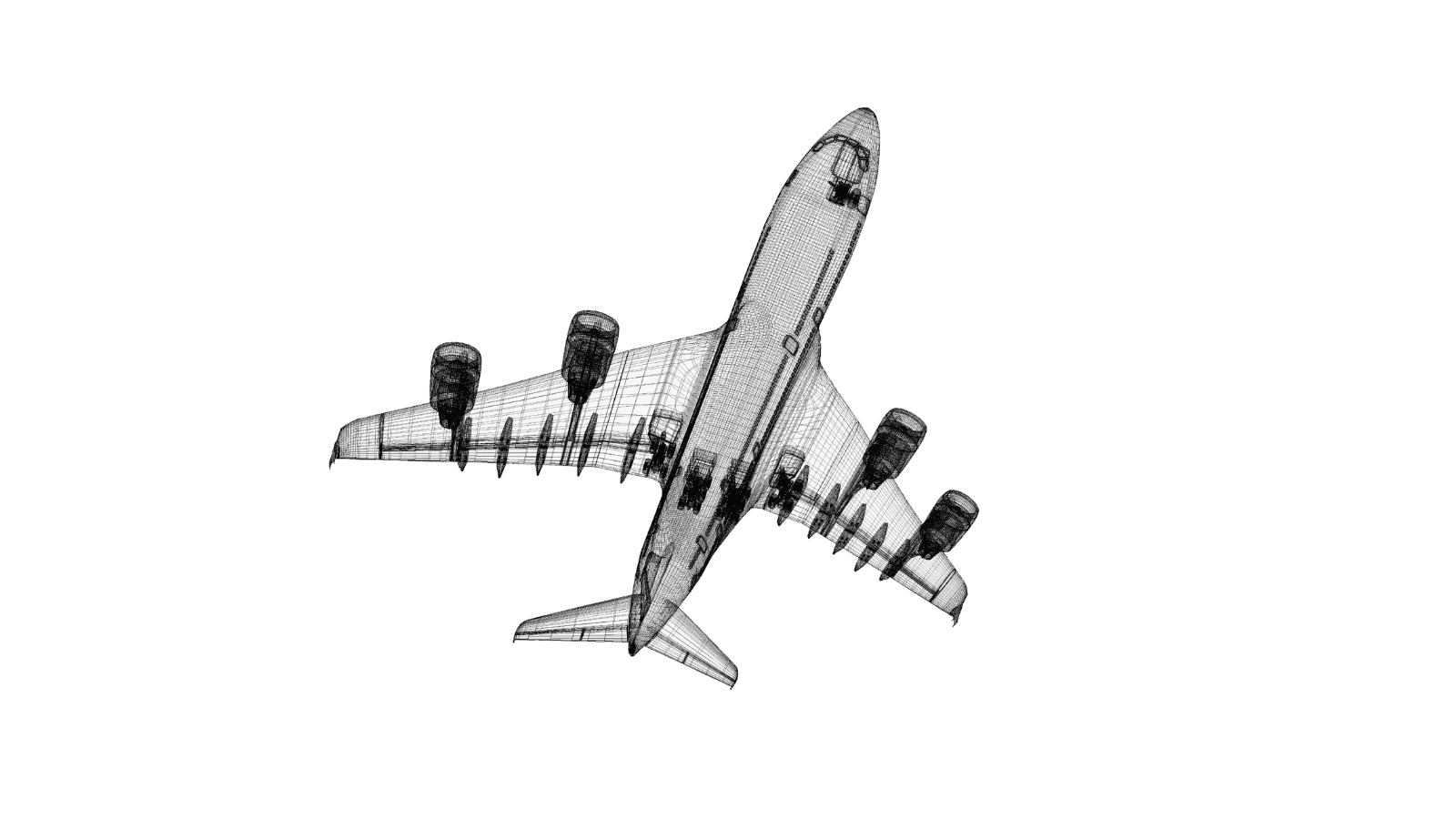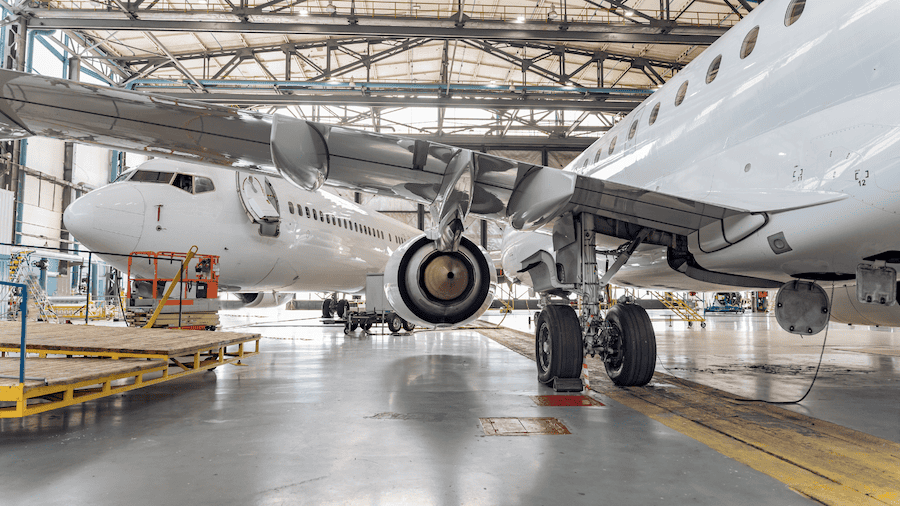CASE STUDY
Intro to the Problem
As those who use investment cast parts in their products for the aerospace industry know, casting has always presented challenges: dimensional variation, post processing steps, non-destructive testing requirements, and uncertainty in material properties. For many, the final straw was the recent supply chain crisis that brought casting-centric production lines to a halt.
When it comes to casting, the selection of high quality domestic providers is shrinking as experts with relevant expertise retire. Meanwhile, overseas supply chains continue to struggle, and are forecast to be slower and more fragile for the foreseeable future, given the ongoing pandemic and geopolitical concerns. This is forcing many in the aerospace industry to take steps to address the uncertainty and significant delays they’re experiencing with cast parts: it’s making it difficult to keep promises to customers.
Even when parts are delivered on time, the value is just not as compelling as it used to be due to rising adjacent costs. When considering the total cost of the manufacturing process— including aforementioned required secondary operations, carrying costs and delays from overseas suppliers, NDT fallout due to poor quality, necessary rework, and line downtime—then casting is not the great deal the piece price quote alone would lead you to believe. Poor quality poses downstream uncertainty and reputational risk for your company, and many are finding that cast parts end up costing much more than they bargained (and budgeted) for.
Throughout the COVID-19 pandemic, 3DEO has heard from multiple customers about their intensifying challenges with investment casting, and we’ve learned a great deal about where we are uniquely able to help our customers. We’d like to highlight a few components we’ve begun producing hand-in-hand with our aerospace customers to get parts flying off their lines again.
NOTE: This case study is based on a US-based Tier 2 aerospace supplier’s success in migrating from a legacy investment cast supply chain to 3DEO’s metal 3D printing services.

The Challenge

The challenges associated with this component are a combination of failings of the supply chain and fundamental limitations of the investment casting process.
Our customer, an aerospace tier 2 supplier, was unable to deliver subassemblies to their customer because their supplier was months behind schedule. The casting supplier saw this order as a relatively small proportion of their revenue for difficult-to-produce parts, and consequently had deprioritized them. The tier 2 supplier could not get commitments from their supplier to tighten delivery timelines, let alone ship parts.
Ultimately, the final customer, the aircraft manufacturer, was left in a challenging position sitting on over $12 million of incomplete product, awaiting subassemblies from the tier 2 supplier.
In addition to suppliers missing delivery timelines, a systemic challenge for this aerospace company was the poor quality of the investment cast parts themselves. According to this customer, the cast parts they receive from their vendors struggle with porosity:
And, this problem is not predictable—until the parts are radiographically or ultrasonically inspected, there’s no way to ensure casting quality. Recently, this manufacturer received a shipment of castings which nearly ALL failed NDT inspection, requiring rework. It was a lucky close call that they could even rework the components, as they previously had a failed run in 2019 that had to be scrapped entirely.
”We sectioned the samples you’ve provided and reviewed them side-by-side with the cast version of the same part; the castings look like swiss cheese by comparison.
Engineering manager,
Aerospace customer
While it will take time to execute, as a result of all these headaches the Director of Engineering for the product group that we’ve been working with is actively working to migrate parts away from casting to more reliable & timely firms that are using technologies that produce higher performing, more predictable parts. They tapped 3DEO to be just such a supplier.
The Solution

3DEO was able to help this customer solve its challenges with this part and get their subassemblies back in production—which was the beginning of a true partnership. This customer is leveraging 3DEO’s resources in a way that is creating long-term competitive advantage for the aerospace company, as they continue to bring additional components to be adapted from investment casting to additive manufacturing at scale. But what got the ball rolling?
To get started, 3DEO’s applications engineering team met with the customer’s engineering and procurement teams to fully understand the application in question and ensure 3DEO can deliver a working solution.
After reviewing the drawings and CAD designs, 3DEO immediately went to work on the first articles. Using its proprietary technology, 3DEO optimized the customer’s design for additive manufacturing in an effort to deliver a part closer to the final shape and eliminate post processing.
First articles were delivered in two weeks. One of 3DEO’s main advantages is that the sample parts are made on the same printers that produce production parts. As a result, any testing done on first articles remains valid for initial production runs. This dramatically accelerates launch cycles for new components.
Quality testing revealed that 3DEO’s material properties, dimensional tolerances, and surface finish were all superior to investment casting. Given the situation with the complete lack of parts from the investment casting supplier, the aerospace customer was able to seamlessly transition production to 3DEO.
”The 3DEO part surface finish looks great by comparison to the castings: no scratches, no pitting, and highly uniform. We regularly get castings that have to be reworked to meet customer aesthetic requirements. We have not rejected any parts yet that we’ve received from them.
Engineer,
Aerospace customer
Now, 3DEO is reviewing and qualifying other IC parts with this tier 2 supplier to help more of their product lines. A true manufacturing partnership is developing between the companies to ensure product is continually flowing with local manufacturing capability.
How 3DEO Added Value
- Supplied parts within two weeks when investment casting supplier was unable or unwilling to deliver parts
- Eliminated post processing due to tighter tolerances from 3DEO and reduced post machining of IC parts
- 3DEO’s high material density eliminated the “swiss cheese” associated with IC
- NDT fallout eliminated because they aren’t finding any parts with poor density – all parts delivered are usable by customer
Why customers choose 3DEO over Investment Casting
About 3DEO
3DEO is an award-winning design, engineering and manufacturing service firm specializing in complex metal 3D printed components produced in high volumes. 3DEO is driven by its commitment to help engineers to solve tough problems in novel ways that scale. For more on 3D metal printing aerospace read below:
We help companies at every stage of the product lifecycle from conceptual ideation to commercial production, through partnering with our customers on additive design manufacturing. And, our offering gives you parts that don’t just ‘look-like’ or ‘work-like’ the end part: 3DEO provides a unique production-ready additive platform where the first part is the real part.
A next-generation American manufacturing technology company, 3DEO is working with many aerospace companies today to replace MRO investment cast components. 3DEO strives to uphold high standards of quality in all that we do: we are ISO 9001 certified and currently certifying for AS9100.

3DEO accelerates customer innovation through its combination of unique additive manufacturing technology and professional services.
- Early-stage design for additive manufacturing
- Component functionality optimization
- Transition from prototyping to production
- Production at scale
- 3D metal printing aerospace
3DEO is an indirect supplier to:



De-Risking the Supply Chain
Customer’s Investment Casting Supply Chain
Long cycle times

3DEO’s Supply Chain
Short cycle times, first articles within weeks


